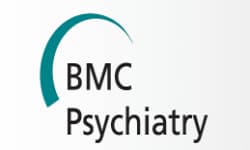 “Epilepsy is a neurological disorder characterized by the presence of seizures and neuropsychiatric comorbidities. Despite the number of antiepileptic drugs, one-third of patients did not have their seizures under control, leading to pharmacoresistance epilepsy.
“Epilepsy is a neurological disorder characterized by the presence of seizures and neuropsychiatric comorbidities. Despite the number of antiepileptic drugs, one-third of patients did not have their seizures under control, leading to pharmacoresistance epilepsy.
Cannabis sativa has been used since ancient times in Medicine for the treatment of many diseases, including convulsive seizures.
In this context, Cannabidiol (CBD), a non-psychoactive phytocannabinoid present in Cannabis, has been a promising compound for treating epilepsies due to its anticonvulsant properties in animal models and humans, especially in pharmacoresistant patients. In this review, we summarize evidence of the CBD anticonvulsant activities present in a great diversity of animal models. Special attention was given to behavioral CBD effects and its translation to human epilepsies.
CBD anticonvulsant effects are associated with a great variety of mechanisms of action such as endocannabinoid and calcium signaling. CBD has shown effectiveness in the clinical scenario for epilepsies, but its effects on epilepsy-related comorbidities are scarce even in basic research. More detailed and complex behavioral evaluation about CBD effects on seizures and epilepsy-related comorbidities are required.”
https://www.ncbi.nlm.nih.gov/pubmed/31954723
“CBD presents anticonvulsant behavioral effects in animal models of epilepsy. CBD induces neuroprotection in animal models of epileptic seizures. Multiple mechanisms of action are associated to CBD anticonvulsant effects. Animal models support CBD therapeutic use for epilepsies treatment.”
https://www.sciencedirect.com/science/article/pii/S014976341931067X?via%3Dihub

 “Osteoarticular equine disease is a common cause of malady; in general, its therapy is supported on steroids and nonsteroidal anti-inflammatories. Nevertheless, many side effects may develop when these drugs are administered. Nowadays, the use of new alternatives for this pathology attention is demanded; in that sense,
“Osteoarticular equine disease is a common cause of malady; in general, its therapy is supported on steroids and nonsteroidal anti-inflammatories. Nevertheless, many side effects may develop when these drugs are administered. Nowadays, the use of new alternatives for this pathology attention is demanded; in that sense,  “Medicinal cannabis has received increased research attention over recent years due to loosening global regulatory changes.
“Medicinal cannabis has received increased research attention over recent years due to loosening global regulatory changes. “Cannabis sativa L. is an ancient medicinal plant wherefrom over 120 cannabinoids are extracted. In the past two decades, there has been increasing interest in the therapeutic potential of cannabis-based treatments for neurological disorders such as epilepsy, and there is now evidence for the medical use of cannabis and its effectiveness for a wide range of diseases.
“Cannabis sativa L. is an ancient medicinal plant wherefrom over 120 cannabinoids are extracted. In the past two decades, there has been increasing interest in the therapeutic potential of cannabis-based treatments for neurological disorders such as epilepsy, and there is now evidence for the medical use of cannabis and its effectiveness for a wide range of diseases. “To determine if cannabis may be used as an alternative or adjunct treatment for intermittent and chronic prescription opioid users.
“To determine if cannabis may be used as an alternative or adjunct treatment for intermittent and chronic prescription opioid users. “There is growing recognition of the potential utility of medical cannabis as a harm reduction intervention.
“There is growing recognition of the potential utility of medical cannabis as a harm reduction intervention.

 “Neurofibromatosis type 1 (NF1) is a common genetic disorder. Pain is a major symptom of this disease which can be secondary to the development of plexiform and subcutaneous neurofibromas, musculoskeletal symptoms (such as scoliosis and pseudoarthrosis), and headaches. Visible neurofibromas add significant psychosocial distress for NF1 patients. Along with the chronic pain, psychosocial distress contributes to associated mood disorders, such as depression and anxiety.
“Neurofibromatosis type 1 (NF1) is a common genetic disorder. Pain is a major symptom of this disease which can be secondary to the development of plexiform and subcutaneous neurofibromas, musculoskeletal symptoms (such as scoliosis and pseudoarthrosis), and headaches. Visible neurofibromas add significant psychosocial distress for NF1 patients. Along with the chronic pain, psychosocial distress contributes to associated mood disorders, such as depression and anxiety. “Tetrahydrocannabinol (THC), cannabidiol (CBD) and cannabinol (CBN) affect the human endocannabinoid system.
“Tetrahydrocannabinol (THC), cannabidiol (CBD) and cannabinol (CBN) affect the human endocannabinoid system.